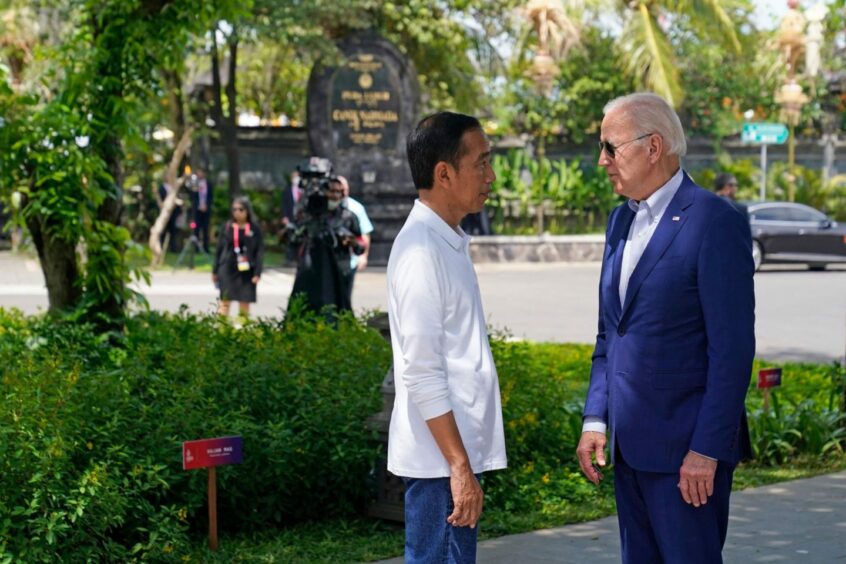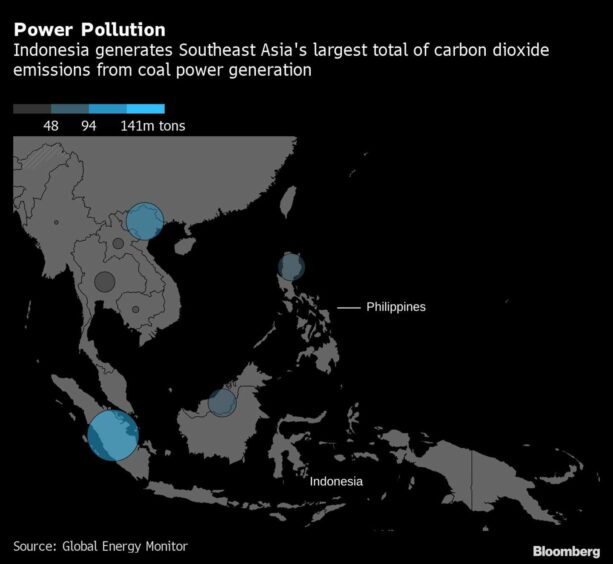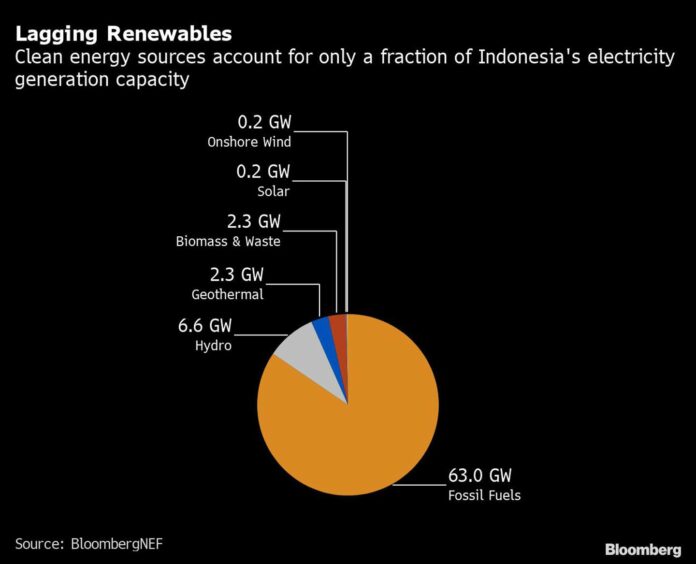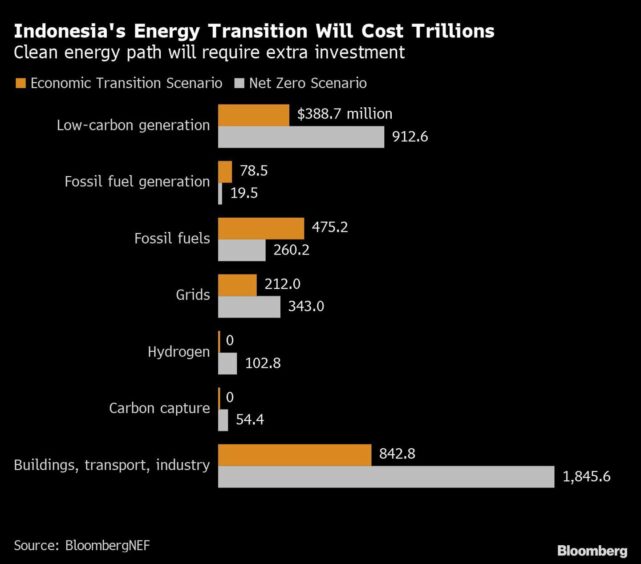
A massive $20 billion deal with the US and Japan will kick-start Indonesia’s drive to wean itself off coal power, though the country may still need trillions more to reach net-zero emissions while meeting growing demand for energy.
US President Joe Biden and Indonesian President Joko Widodo announced the climate finance deal, known as the Just Energy Transition Partnership, or JETP, on Tuesday at a meeting of Group of 20 leaders in Bali. In exchange for a mix of funds from government and private sources, Indonesia has committed to retiring Southeast Asia’s largest coal power fleet and reaching net-zero emissions from its power sector.
But even after retiring coal plants and boosting renewables, Indonesia has a long way to go in providing clean energy for a growing economy where per-person energy use is a fraction of richer nations.
Setting aside a rapid energy transition, Indonesia would still require $2 trillion of investment into its energy system through 2050, according to BloombergNEF. Reaching net-zero by 2050 could cost $3.5 trillion.

The JETP arrangement is a good start. Some of the funding will be used for renegotiating debt tied to existing coal plants, so they can retire early without financial penalties. The deal is crucial on this front for Indonesia, where one of the main hurdles to building more renewables is a surplus of coal power plants with contracts that guarantee they get paid whether they generate or not.
Until those plants start to shutter, there’s little room on the grid to add clean energy. The good news is that $20 billion can go a long way toward speeding up coal retirements.
The Jakarta-based Institute for Essential Services Reform estimated that it would cost $28 billion to expedite retirements by 2050. And London-based TranzitionZero said $37 billion would be needed to buy out existing contracts and close all plants by 2040.
“JETP should be the final piece of Indonesia’s puzzle to accelerate its energy transition,” said Achmed Shahram Edianto, Asia electricity analyst for climate research firm Ember. “Under the JETP, Indonesia should maintain its remarkable momentum and show its leadership on accelerating the efforts to fully decarbonise its energy sector.”

Indonesia is rich in coal, with a mining industry that leads the world in fuel exports and employs about 250,000 people. The nation also has one of the highest shares of coal power generation in its electricity mix.
Indonesia’s coal output began to soar in the 1990s, when the country anticipated a boom in demand for electricity and invested heavily in coal power. In 2015, as nations signed the Paris Agreement and started shifting more seriously to renewables, Jokowi launched a program to build 35,000 megawatts of new power capacity, much of which was supported by adding 117 coal-fired power plants.
The lack of investment in solar is particularly egregious given Indonesia’s abundance of sunlight. IESR estimated that if solar panels covered all barren land, dry shrubs, savannahs, old mines and agricultural plantations — in other words, about a quarter of Indonesia’s total land — the country could generate on average almost 27 million gigawatt-hours of electricity. That’s more than enough to power the entire globe.

Instead, the equatorial nation, home to the world’s fourth-largest population, had just 210 megawatts of solar panels — less than Arctic Circle-straddling Norway.
The JETP deal will help change that calculus. Most of the extra spending will come in the form of new renewables and energy storage, upgrades to the power grid, and enhancing buildings, factories and the transport sector, according to BloombergNEF.
The transition could save Indonesia hundreds of billions on fossil fuel costs and help unlock the metal-rich nation’s potential as a global battery manufacturing hub.
Recommended for you
